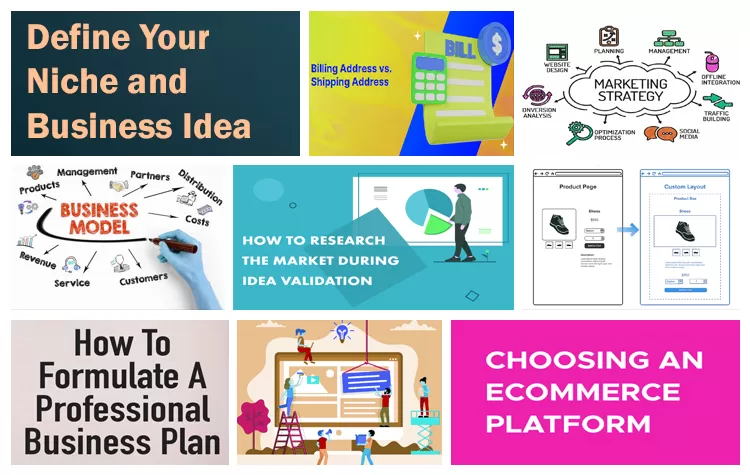
Building an online store successfully is never an easy feat. To be frank, it requires careful planning, the right tools, and dedication toward making sure seamlessness in the customer experience occurs. Here are some steps from the idea towards launching a profitable eCommerce store.
Determine your niche: Start with things you love and have passion for. Look up the market demand, as well as study your competitors, so you know what they do and where opportunities exist in the marketplace.
Tips for Defining Your Niche:
Example: if you'd like to involve yourself in some kind of business activity concerning sustainability, you can start an e-commerce venture selling earth-friendly kitchen ware to green-conscious customers.
Validate your idea through market research where you test your idea regarding the demand of a specific product before investing in your business. It can be done through Google Trends and social media sites in order to check if people want your product or not.
Steps involved in Market Research
Example: Assume demand for ecological products increases with a relative scarcity. In this case, your idea goes to extraordinary potential.
Choose among any business model that best suits your resources and ambition. The most popular are:
A business plan acts like a steering wheel and attracts an investor. It should establish what you are selling, in what market, and how you will be conducting your business, sources of revenue, and how to market.
Major Components of a Business Plan:
Choose an eCommerce platform that works best for you:
TIP: Make your site mobile friendly. Sales increasingly coming from mobile apps.
Your store’s design affects trust and conversions. Opt for a clean, professional design that reflects your brand identity.
Suggestions for Store Design:
Example: For an eco-friendly store, use minimalist design with earth tones to reflect sustainability.
Product pages must be informative and interesting. With high-quality images and a compelling description that goes on to add price information also.
Best practices of product pages:
Pro Tip: Use SEO-friendly descriptions so that it could rank higher in search results.
You need to Install your payment gateways and shipping methods. It must be secure.
Pro Tip: More than one payment option according to their liking
Proper Marketing Plan to Generate Traffic.
Example: Partner with some influencers to promote your green products on social media.
After fixing all of these, launch your store. Then you'll begin monitoring your performance and keep working on more improvement based on the feedback that has been in the accrual.
Post-Launch Tasks:
Conclusion
Creating a successful shop takes time; strategic planning is involved. From the niche to opening your store and subsequent optimization, this is the guide that will take you in creating a profitable eCommerce business set up your store for long term success and achieving excellent customer experience.